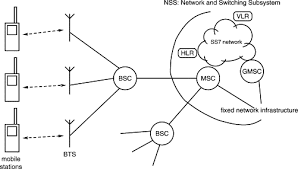Demystifying Signalling Networks: The Backbone of Modern Telecommunications
In the rapidly evolving landscape of telecommunications, the term signalling network often surfaces as a critical component that ensures seamless communication. Despite its fundamental role, the intricacies of signalling networks remain obscure to many. This blog aims to unravel the complexities of signalling networks, exploring their functions, types, significance, and the challenges they face in today’s digital age.
What is a Signalling Network?
A signalling network is a specialized system within telecommunications that manages the setup, maintenance, and termination of communication sessions. Unlike the data networks that carry the actual content of communication (such as voice calls, texts, or internet data), signalling networks handle the control information required to establish and manage these connections.
Think of a signalling network as the nervous system of telecommunications—coordinating and directing the flow of information to ensure that communication channels are properly established and maintained.
Key Functions of Signalling Networks
Call Setup and Teardown:
- Initiation: When you make a call, the signalling network identifies the recipient and sets up the necessary pathways for the call to proceed.
- Termination: Once the call ends, the signalling network efficiently tears down the connection, freeing up resources for future communications.
Routing and Switching:
- Determines the optimal path for data to travel from the sender to the receiver.
- Manages the switching of data between different network nodes to maintain efficient communication.
Authentication and Security:
- Verifies the identities of communicating parties to prevent unauthorized access.
- Implements security protocols to protect against threats like interception and fraud.
Network Management:
- Monitors network performance and ensures quality of service.
- Handles error detection and correction to maintain reliable communication.
Types of Signalling Networks
Signalling networks have evolved alongside telecommunications technologies. Here are some of the prominent types:
1. Signalling System No. 7 (SS7)
SS7 is one of the most widely used signalling protocols in traditional telephony. Developed in the 1970s, SS7 facilitates call setup, routing, and management across public switched telephone networks (PSTNs). Despite its age, SS7 remains integral but is increasingly vulnerable to security threats, such as SS7 attacks that can intercept calls and messages.
2. Diameter Protocol
The Diameter protocol is designed for authentication, authorization, and accounting (AAA) in modern IP-based networks, including 4G and 5G mobile networks. It offers enhanced security features compared to SS7 and supports more complex interactions required by contemporary services.
3. Session Initiation Protocol (SIP)
SIP is primarily used for initiating, maintaining, and terminating real-time sessions in IP-based networks, such as voice over IP (VoIP) calls and video conferencing. SIP is highly flexible and supports multimedia communication, making it a cornerstone of modern internet-based communications.
4. Mobile Application Part (MAP)
MAP is a signalling protocol used within mobile networks to facilitate communication between different network elements. It plays a crucial role in services like roaming, SMS, and location-based services.
Importance of Signalling Networks
Signalling networks are indispensable for several reasons:
- Efficiency: They enable the rapid setup and teardown of communication sessions, ensuring efficient use of network resources.
- Scalability: Signalling networks can handle vast numbers of simultaneous connections, accommodating the growing demand for communication services.
- Reliability: By managing error detection and correction, signalling networks ensure consistent and dependable communication.
- Security: They enforce authentication and encryption protocols to protect against unauthorized access and cyber threats.
Security Challenges in Signalling Networks
While signalling networks are foundational to telecommunications, they are not without vulnerabilities. Some of the key security challenges include:
1. SS7 Vulnerabilities
As mentioned earlier, SS7 lacks robust security features, making it susceptible to attacks that can intercept calls, messages, and track user locations. These vulnerabilities pose significant risks to both individual privacy and corporate security.
2. Denial of Service (DoS) Attacks
Attackers can overwhelm signalling networks with excessive requests, disrupting the ability to set up legitimate communication sessions. This can lead to widespread service outages and degraded network performance.
3. Man-in-the-Middle (MitM) Attacks
In MitM attacks, adversaries intercept and potentially alter signalling messages between network elements. This can compromise the integrity of communication sessions and expose sensitive information.
Protecting Signalling Networks
Ensuring the security and reliability of signalling networks requires a multi-faceted approach:
1. Implementing Robust Authentication
Enhancing authentication mechanisms can prevent unauthorized access to signalling networks. Protocols like Diameter offer stronger authentication compared to SS7, reducing the risk of interception and fraud.
2. Deploying Signalling Firewalls
Signalling firewalls monitor and filter signalling traffic, blocking suspicious or unauthorized activities. These firewalls act as a barrier against common threats targeting signalling protocols.
3. Regular Security Audits and Assessments
Conducting periodic security assessments helps identify and mitigate vulnerabilities within signalling networks. Proactive measures can address potential weaknesses before they are exploited by attackers.
4. Transitioning to Secure Protocols
Migrating from legacy protocols like SS7 to more secure alternatives such as Diameter and SIP can significantly enhance the security posture of telecommunications networks. These modern protocols incorporate advanced security features tailored to contemporary threats.
The Future of Signalling Networks
The telecommunications industry is witnessing a paradigm shift with the advent of 5G and beyond. These next-generation networks demand signalling solutions that are not only more secure but also capable of handling the increased complexity and data throughput.
Software-Defined Networking (SDN) and Network Function Virtualization (NFV) are emerging as key technologies to enhance the flexibility and security of signalling networks. By decoupling signalling functions from hardware, these technologies enable dynamic and scalable network management, paving the way for more resilient and adaptable communication infrastructures.
Conclusion
Signalling networks are the unseen heroes of modern telecommunications, orchestrating the intricate dance of data and voice communications that underpin our connected world. Understanding their functions, types, and the security challenges they face is crucial for both telecom professionals and informed users. As technology advances, the evolution of signalling networks will continue to play a pivotal role in shaping the future of global communications, ensuring that our networks remain secure, efficient, and reliable.
By staying informed and adopting robust security measures, we can safeguard these critical systems against emerging threats, ensuring that the backbone of our digital communications remains strong and resilient.




Comments
Post a Comment